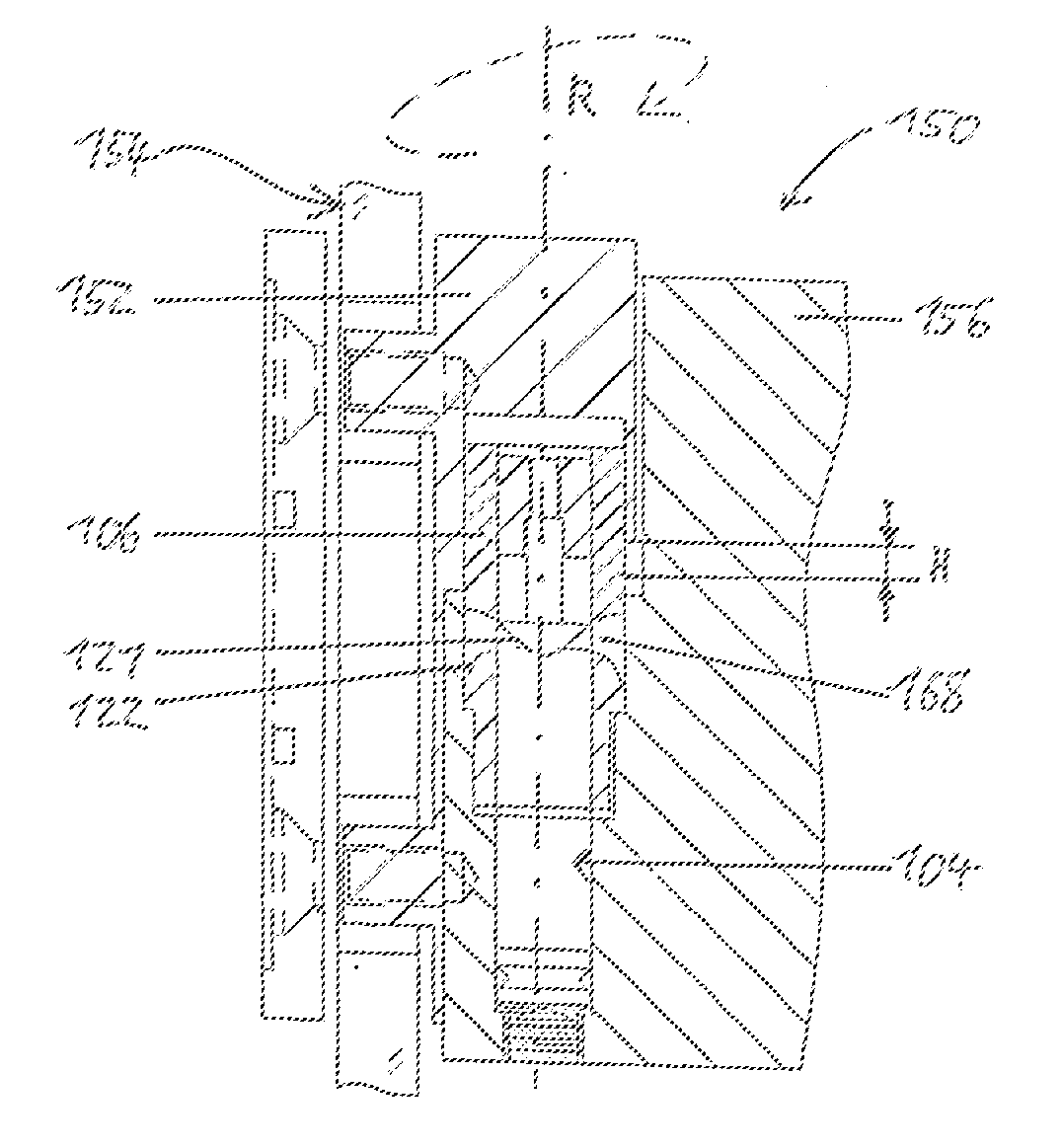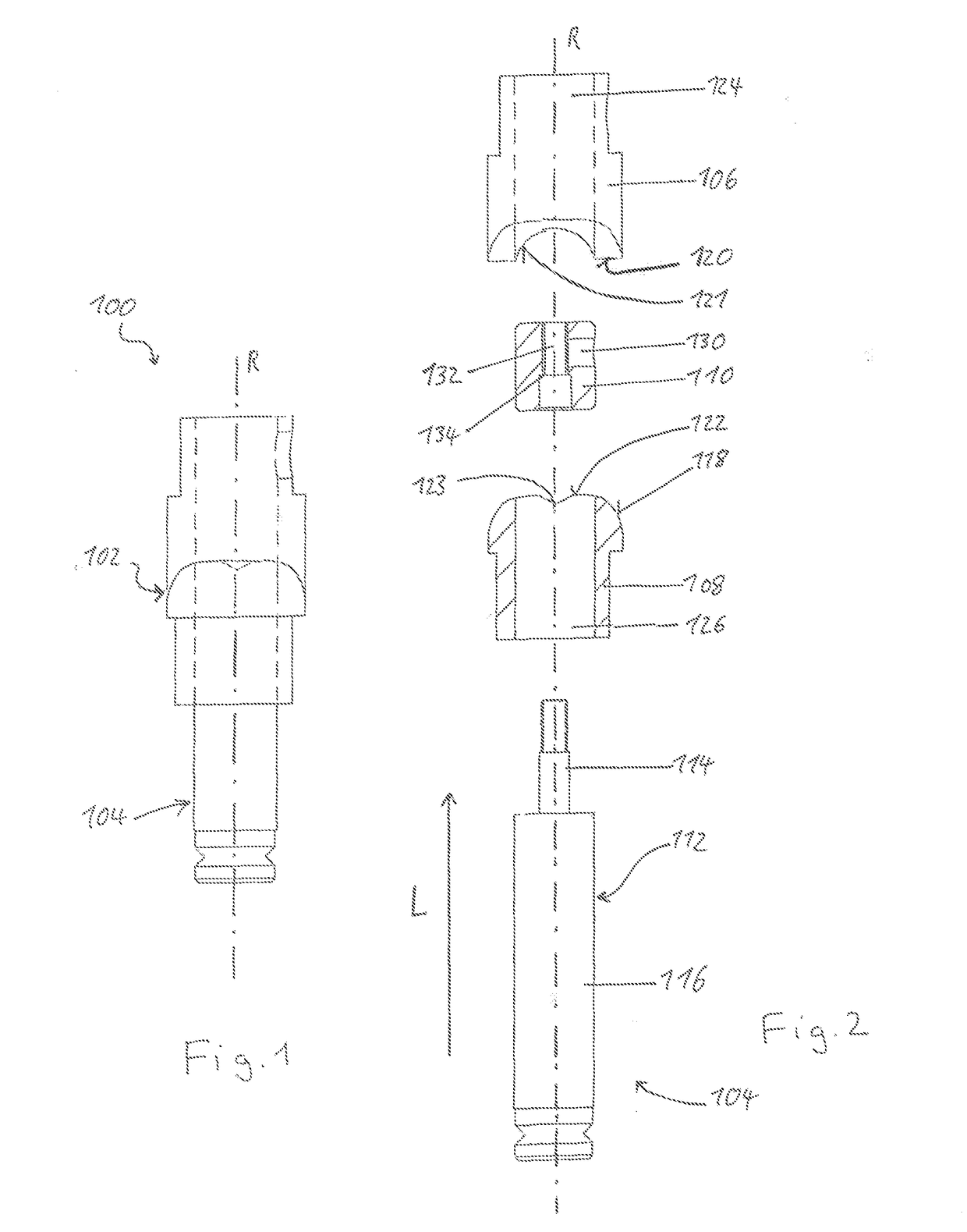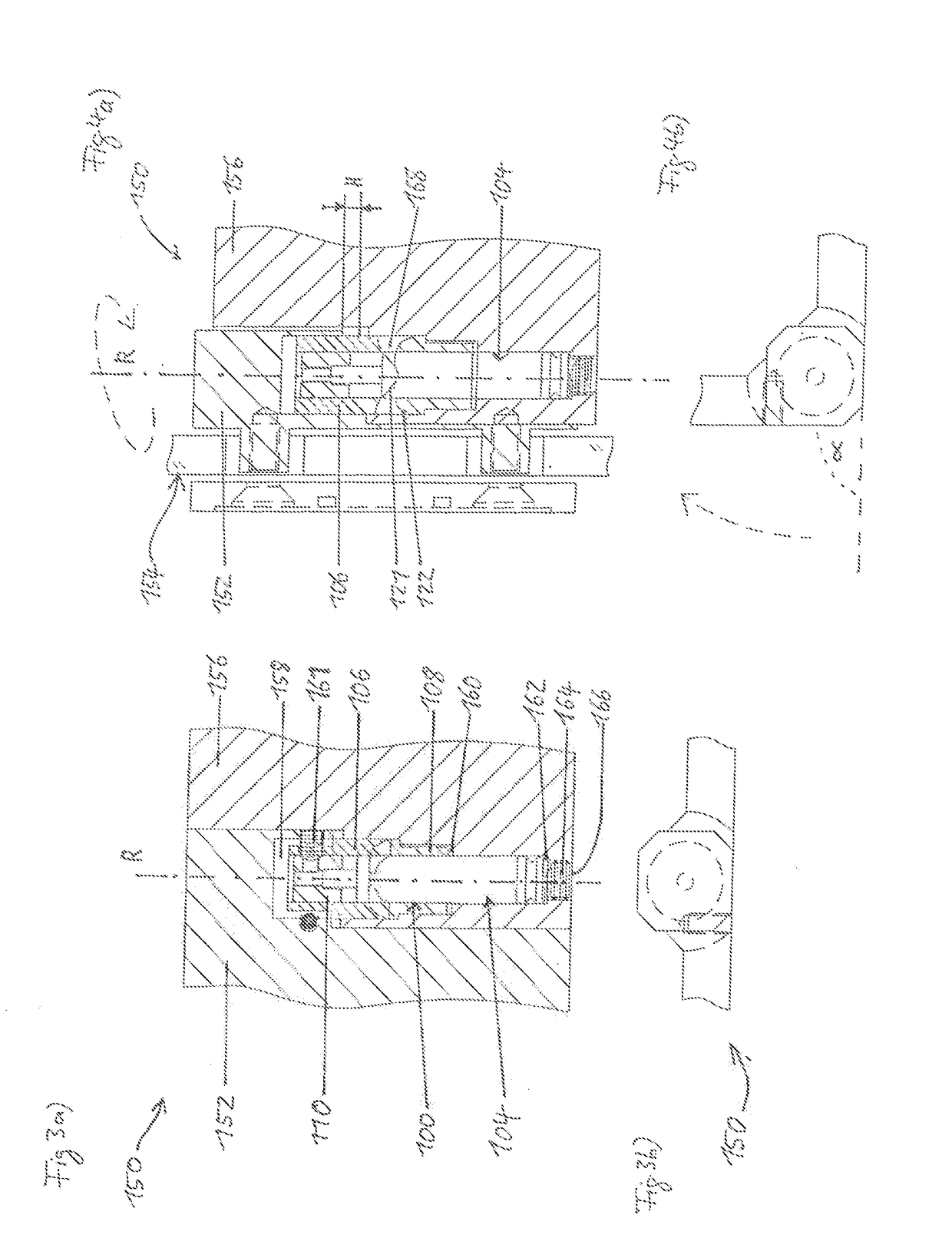Door hinge
- Summary
- Abstract
- Description
- Claims
- Application Information
AI Technical Summary
Benefits of technology
Problems solved by technology
Method used
Image
Examples
first embodiment
[0038]In FIG. 1 and 2, a hinge bearing unit 100 according to the invention is shown. The hinge bearing unit 100 comprises a rotational bearing 102 and a hydraulic dampener 104 which are arranged coaxially to the hinge axis R.
[0039]The rotational bearing 102 comprises a first, upper bearing part 106, a second, lower bearing part 108 which both comprise a sleeve portion, and a plug 110 which defines a first front wall closing bearing part 106.
[0040]The hydraulic dampener 104 has an elongated, preassembled piston-cylinder unit 112 with a piston rod end 114 which protrudes from the cylinder 116 and is resiliently pushed in direction L by the pressure within the cylinder 116.
[0041]The first bearing part 106 and the second bearing part 108 feature front surfaces 118, 120 (here: ring-shaped front surfaces) which are opposing each other and are, at least in sections, complementary as well as contacting each other.
[0042]In this embodiment, each of the front surfaces 118, 120 defines a cam su...
second embodiment
[0061]FIG. 5 illustrates the present invention, wherein the hinge bearing unit 200 comprises a rotational bearing 202 and at least one (here two) hydraulic dampener 212 which is arranged perpendicular to the hinge axis R.
[0062]The rotational bearing 202 is formed by a bearing rod 206 which features a section 208 with a non-circular cylindrical circumferential surface 210 defining a cam 211 having portions with different distances from the hinge axis R.
[0063]The hydraulic dampeners 212 are two identical units which are arranged parallel to each other. Each unit comprises an elongated, preassembled piston-cylinder unit 212 with a piston rod end 214 which protrudes from a cylinder 216. A spring 218 through which the piston rod end 214 extends and a head part 220 attached to the outer free piston rod end 214 are for urging against the cam 211 in order to self-close the door by the force of the springs.
[0064]The spring 218 extends between the head part 220 and the cylinder 216 and pulls ...
third embodiment
[0076]FIG. 8a) illustrates the present invention, wherein the hinge bearing unit 300 comprises a rotational bearing 302 and a hydraulic dampener 304 which are arranged coaxially to the hinge axis R.
[0077]The rotational bearing 302 comprises a first, upper bearing part 306 and a second, lower bearing part 308 which comprises a sleeve portion.
[0078]The hydraulic dampener 304 has an elongated, preassembled piston-cylinder unit 312 with a piston rod end 314 which protrudes from the cylinder 316 and is resiliently pushed in direction L by the pressure within the cylinder 316 (see FIG. 8b).
[0079]The first bearing part 306 features a section with a surface 318 in the form of a female thread 321 aligned with the hinge axis R and the second bearing part 308 features a section with a surface 320 in the form of a corresponding male thread 322, so that the first bearing part 306 and the second bearing part 308 are coupled to each in the direction of the hinge axis R by the threads 321, 322.
[008...
PUM
 Login to View More
Login to View More Abstract
Description
Claims
Application Information
 Login to View More
Login to View More - R&D
- Intellectual Property
- Life Sciences
- Materials
- Tech Scout
- Unparalleled Data Quality
- Higher Quality Content
- 60% Fewer Hallucinations
Browse by: Latest US Patents, China's latest patents, Technical Efficacy Thesaurus, Application Domain, Technology Topic, Popular Technical Reports.
© 2025 PatSnap. All rights reserved.Legal|Privacy policy|Modern Slavery Act Transparency Statement|Sitemap|About US| Contact US: help@patsnap.com



